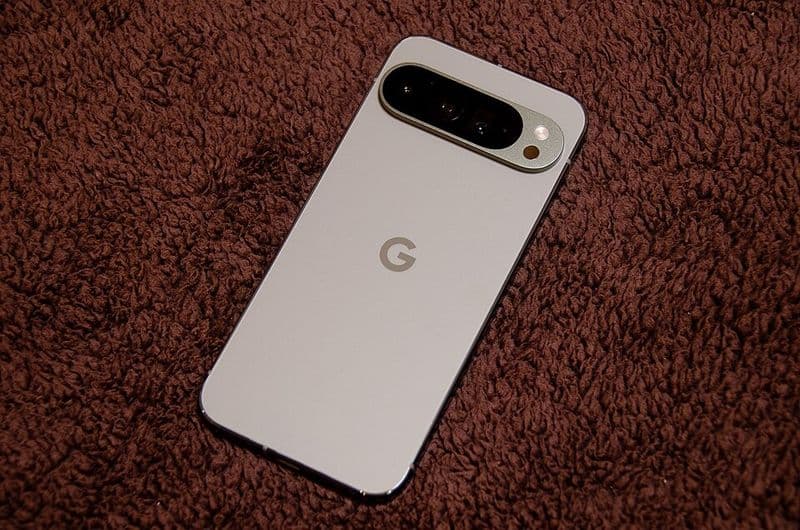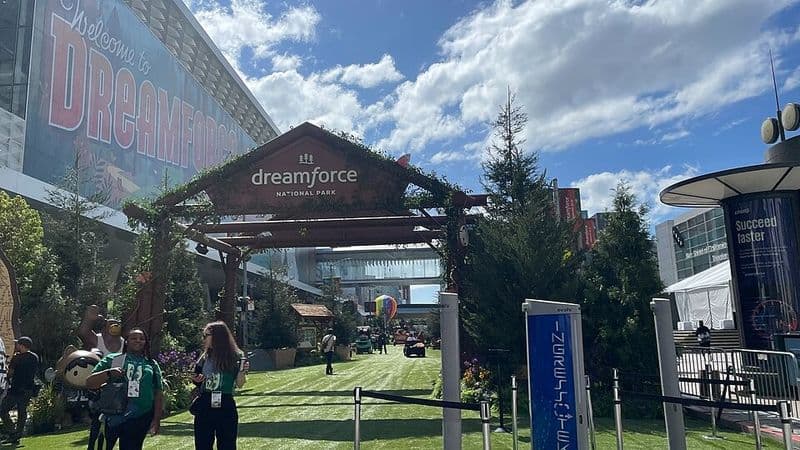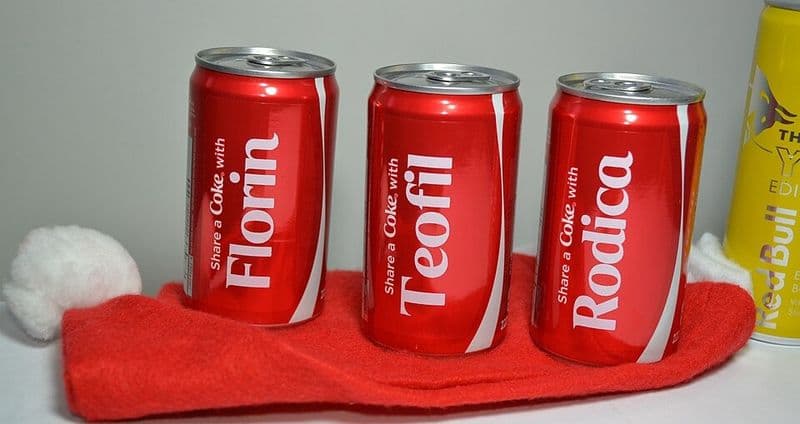9 Real-World Experiential Marketing Examples That Captivated Audiences
In a world flooded with digital ads and endless scrolls, capturing genuine attention is harder than ever. Consumers crave authentic, memorable experiences and not ads. That's why experiential marketing is essential today. Global giants like Red Bull, Nike, Coca-Cola, and Spotify have already mastered this art.
Let's explore some real-world experiential marketing examples that demonstrate why immersive brand experiences are no longer optional but an essential for building lasting relationships and driving measurable business growth.
What Is Experiential Marketing?
Experiential marketing, also known as engagement marketing, focuses on creating direct and meaningful interactions between brands and consumers. It involves real-world experiences that drive emotional engagement, brand loyalty, and advocacy.
Unlike traditional advertising, experiential marketing encourages users to experience the brand firsthand. Whether it's attending an interactive event, testing a product in a creative setting, or engaging in an augmented reality experience, the key goal is audience participation.
Common forms of experiential marketing include:
Pop-up activations: Temporary setups that surprise and delight audiences in unexpected locations.
Brand experiences at events: Immersive booths or live demonstrations that enhance conferences or festivals.
Virtual experiences: AR/VR-based interactions that bring products to life in digital environments.
Sampling campaigns: Hands-on trials that let people test products directly.
In short, experiential marketing merges emotional storytelling with tangible engagement, turning audiences into active participants who form lasting memories.
Why Experiential Marketing Matters?
Experiential marketing goes beyond selling; it creates emotional connections and lasting impressions that traditional advertising can't match. Here's why it's become a powerful tool for modern marketers:
Builds Stronger Emotional Connections: Experiential marketing fosters emotional touchpoints that make people feel a deeper connection to a brand. When consumers experience a brand firsthand, it builds genuine trust and lasting relationships.
Drives Word-of-Mouth and Social Media Buzz: Memorable experiences naturally get shared. Interactive events and activations spark organic conversations, boosting brand visibility across social media.
Boosts Brand Loyalty and Retention: Engaging experiences turn customers into loyal advocates. When people feel part of a brand's story, they're more likely to return and recommend it.
Creates Measurable Business Impact: Experiential campaigns drive tangible results, offering clear ROI and insights for future strategies.
Differentiates Brands in a Crowded Market: Unique, immersive experiences help brands stand out from the crowd. They create moments that competitors can't replicate, positioning the brand as innovative and customer-focused.
Encourages Deeper Customer Understanding: Real-time interactions reveal valuable insights into customer preferences and behaviors, helping brands tailor future campaigns more effectively.
Top Experiential Marketing Examples
The best way to understand this strategy is to explore real-world experiential marketing examples that have transformed brand engagement. Below are some notable examples of brands that successfully merged creativity, emotion, and participation.
1. Red Bull Stratos
In 2012, Red Bull redefined experiential marketing with the Stratos space jump. Sponsored athlete Felix Baumgartner free-fell from the stratosphere, reaching speeds over 800 mph. The event was livestreamed to millions worldwide, showcasing Red Bull's brand ethos: "Gives You Wings."
Why it worked: It aligned perfectly with Red Bull's adventurous identity and created an unforgettable global moment.
Impact: Over 8 million live YouTube viewers and billions of media impressions.
This remains one of the most iconic experiential marketing strategies, blending storytelling, technology, and human daring.
2. Mixed Reality Advertising for Google Pixel 9a

Flam partnered with Google to launch a groundbreaking Mixed Reality (MR) advertising campaign for the Pixel 9a, transforming traditional print ads into fully interactive experiences. By simply scanning a QR code, users could see the phone "come alive" in 3D, exploring its vibrant design, AI-powered features, and intuitive functionality right from the page.
Why it worked: The campaign seamlessly merged the physical and digital worlds, turning a static newspaper ad into an engaging, hands-on product demo. It offered consumers an immersive, app-free experience that bridged curiosity with instant interaction, redefining how audiences engage with print media.
Impact: The MR activation deepened product understanding, strengthened Google's innovation-driven brand image, and demonstrated how interactive storytelling can convert attention into action.
By reimagining print as a portal to digital immersion, Flam and Google showcased how Mixed Reality advertising can transform everyday moments into extraordinary brand experiences.
3. Spotify Wrapped
Every December, Spotify users receive personalized year-in-review playlists highlighting their listening habits. The Spotify Wrapped campaign invites people to share these results online, turning data into a viral social event.
Why it worked: It celebrates users' individuality while promoting Spotify's core service.
Impact: Generated over 60 million shares on social media in 2023.
This is one of the most effective digital experiential marketing examples, proving that even data analytics can become an emotional storytelling tool.
4. Verizon's Super Bowl FanFest (2025)
Verizon's 2025 Super Bowl FanFest transformed the game-day experience into an interactive tech showcase. Fans utilized 5G-powered AR and VR experiences to relive iconic football moments, meet players virtually, and explore future sports innovations within a connected, high-energy environment that seamlessly blended entertainment and technology.
Why it worked: It showcased Verizon's 5G leadership while offering fans a hands-on, emotional experience tied to their passions.
Impact: Generated millions of social impressions and positioned Verizon as an innovator redefining fan engagement through connectivity.
By merging sports, technology, and storytelling, Verizon turned spectators into participants, the essence of experiential marketing.
5. Salesforce's Dreamforce

Salesforce's annual Dreamforce conference is more than a business event; it's a full-scale immersive experience. The multi-day gathering combines keynote sessions, live music, wellness zones, and interactive product demos, fostering a community-driven environment that celebrates learning, connection, and innovation throughout the Salesforce ecosystem.
Why it worked: It fosters authentic community engagement while showcasing Salesforce's technology in action through hands-on sessions.
Impact: Attended by over 150,000 people annually, Dreamforce drives brand advocacy, lead generation, and deep customer relationships.
Dreamforce proves that when education meets experience, business events can become brand-defining moments.
6. Samsung Galaxy S25 Ultra Mixed Reality Campaign
Flam created the first-ever voice-activated Mixed Reality ad for the Samsung Galaxy S25 Ultra, allowing users to explore an interactive map simply by voice command. The experience blurred the line between digital and physical worlds, no apps, no downloads, just instant, immersive engagement powered by voice and vision.
Why it worked: It redefined digital advertising by eliminating friction and placing the audience in control through natural interaction, turning passive viewers into active explorers.
Impact: The campaign increased user engagement for Samsung while highlighting Flam's pioneering role in next-generation ad experiences.
By transforming an ad into an experience, Flam and Samsung demonstrated that the future of marketing is not just watching ads, but experiencing them.
7. Coca-Cola's "Share a Coke" Campaign

Coca-Cola replaced its famous logo with popular first names, inviting customers to "Share a Coke" with friends and family. This campaign turned product packaging into a personalized experience that people couldn't resist sharing on social media.
Why it worked: It made customers feel seen and included in the brand narrative.
Impact: Sales in the U.S. grew by over 2% during the first summer of the campaign, reversing a decade-long decline.
This activation demonstrates how experiential marketing benefits can extend from emotional engagement to measurable sales growth.
8. Nike's House of Innovation
Nike's flagship "House of Innovation" stores in New York and Shanghai are temples of experiential retail. They utilize AR technology, interactive displays, and customization stations to enable shoppers to design, test, and personalize their products.
Why it worked: It gave customers control over their buying journey.
Impact: Higher conversion rates and increased dwell time per visitor.
This approach combines physical and digital experiences, illustrating how experiential marketing strategies can be effectively adapted for omnichannel retail.
9. IKEA's Sleepover Experience
IKEAoffered customers the chance to spend a night in its showroom for a unique sleepover experience. Guests participated in workshops, product trials, and bedtime stories, transforming a regular shopping trip into a fun, memorable night.
Why it worked: It showcased IKEA's commitment to comfort and personalization.
Impact: Strengthened brand perception and increased sales for its bedroom line.
This event exemplifies how creating experiential marketing campaigns can humanize a brand and bring its products to life in a practical setting.
How to Create an Experiential Marketing Campaign
Designing a successful experiential marketing campaign requires more than creativity. It's about aligning brand objectives, audience insight, and emotional storytelling into one cohesive experience. Below is a strategic roadmap for creating experiential marketing campaigns that engage audiences and deliver measurable results.
1. Define Clear Goals and KPIs
Start by identifying what success looks like. Is the goal to generate leads, boost brand awareness, launch a new product, or improve customer loyalty?
Set measurable KPIs such as attendance, engagement rate, social media mentions, or post-event conversions.
Align goals with the broader marketing funnel, including awareness, consideration, or purchase intent.
2. Understand Your Audience
Experiential marketing is about connection, and that starts with knowing your audience's motivations and pain points.
Conduct surveys, analyze social data, and review buyer personas.
Identify what types of experiences resonate: emotional, sensory, educational, or entertaining.
For B2B brands, focus on value-based experiences, such as hands-on demos, workshops, or industry meetups.
The better you know your audience, the more authentic and impactful your campaign will feel.
3. Craft a Story Worth Experiencing
Every great experiential campaign is rooted in a compelling story. Your brand narrative should guide the design of every element, from visuals and sounds to interactions.
Ask yourself:
What emotion should participants feel?
How does this experience align with the brand's mission?
What memorable moment can participants take away?
4. Choose the Right Format
Experiential campaigns can take many forms. Here are the most common types:
Live events: Conferences, festivals, and product launches.
Pop-up experiences: Short-term brand activations in high-traffic locations.
Virtual or hybrid experiences: Immersive online interactions that connect global audiences.
Sampling campaigns: In-person opportunities to test or personalize a product.
Selecting the correct format depends on your product, audience size, budget, and desired level of interactivity.
5. Integrate Digital Elements
Modern experiential marketing doesn't end at the event but extends online. Use QR codes, social media hashtags, or AR filters to encourage post-event engagement.
Create shareable moments that participants want to post online.
Utilize retargeting ads to re-engage attendees after the event.
Collect data ethically to measure engagement and ROI.
Combining physical and digital touchpoints maximizes reach and provides valuable insights into campaign performance.
6. Partner with Influencers or Industry Experts
Collaborating with credible voices amplifies reach and credibility. This may mean co-hosting webinars or in-person workshops with thought leaders. Influencer partnerships are particularly effective for live activations that demand authenticity and audience trust.
7. Measure, Analyze, and Optimize
No experiential campaign is complete without analysis. Use both quantitative and qualitative data to analyze the performance:
Engagement metrics, such as attendance, participation rate, or dwell time.
Sentiment analysis, such as social media mentions, feedback forms, and post-event surveys.
Track ROI through leads generated, conversions, or revenue uplift.
Regularly reviewing these metrics ensures that you continue to measure the impact of experiential marketing effectively.
Common Mistakes to Avoid
Even experienced marketers can make critical errors when planning experiential campaigns. Avoiding these experiential marketing mistakes will ensure your efforts are both creative and effective:
1. Focusing on Gimmicks Instead of Value
A flashy activation might attract attention, but if it doesn't connect to your brand's message or audience needs, it fails to deliver value. Experiences must reinforce brand identity, not distract from it.
Example: A VR demo that doesn't align with your core product may engage your audience, but won't convert.
2. Ignoring Data Collection
Experiential campaigns often generate excitement but miss out on post-event data capture. Always collect participant information through sign-ups, QR codes, or app interactions to measure ROI and nurture leads afterward.
3. Overlooking Accessibility and Inclusivity
Brands sometimes overlook the need to accommodate diverse audiences. Ensure your activation is inclusive, physically accessible, culturally sensitive, and welcoming to all. Accessibility not only broadens reach but also strengthens brand reputation.
4. Lack of Follow-Up Strategy
After the event ends, don't let engagement disappear. Many marketers fail to nurture participants after the experience.
Follow up with:
Thank-you emails or exclusive offers
Personalized content based on interactions
Retargeting campaigns for further engagement
This ensures the experience extends beyond a single point of contact.
5. Poor Alignment with Brand Goals
Your campaign may look impressive, but if it doesn't serve your brand's strategic objectives, it's wasted effort. Every experiential marketing strategy should reinforce your core value proposition and contribute to long-term growth.
Measuring the Impact of Experiential Marketing
Effective measuring of experiential marketing impact involves both quantitative and qualitative evaluation. Unlike traditional campaigns that rely on impressions or clicks, experiential marketing requires a deeper examination of emotional resonance and behavioral change.
1. Define Clear Metrics Before Launch
Before execution, establish performance metrics aligned with your campaign goals. These may include:
Engagement metrics: Attendance rate, dwell time, interaction levels.
Sentiment metrics: Positive mentions, social shares, and user-generated content.
Conversion metrics: Leads captured, sales lift, or new customer acquisition.
2. Use Technology to Track Engagement
Leverage tools such as:
RFID or NFC wristbands to track participant movement.
Event apps for surveys and digital sign-ins.
Social listening tools to monitor hashtags and online engagement.
AR/MR/XR analytics dashboards to measure user interactions in immersive campaigns.
QR code analytics link physical experiences to digital metrics, tracking scans and conversions seamlessly.
This data provides insights into how participants interacted with your experience and what aspects drove the most engagement.
3. Analyze Emotional and Behavioral Outcomes
Experiential marketing aims to influence both how people feel and their subsequent actions. Conduct post-event surveys or interviews to assess sentiment. Look for qualitative feedback, such as what participants remember, share, and discuss afterward.
4. Calculate ROI and Long-Term Impact
Use event data to measure both short-term gains (leads and sales) and long-term outcomes (brand loyalty and advocacy). Compare costs against outcomes to determine ROI.
Turning Moments into Lasting Impressions with Experiential Marketing
In a marketplace where attention is fleeting and authenticity defines success, experiential marketing stands as the bridge between brands and genuine human connection. It transforms audiences from passive spectators into active participants, building trust, emotion, and advocacy in ways traditional marketing cannot.
From Red Bull's high-altitude stunts to Flam's mixed reality innovations, brands that create memorable, immersive moments don't sell products but craft stories that people want to live and share. As technology continues to blend the physical and digital worlds, the future of marketing will belong to those who design experiences, not just advertisements.
Bring your brand to life with Flam. Transform ordinary ads into unforgettable experiences using Mixed Reality. Redefine engagement, elevate storytelling, and lead the future of experiential marketing today.